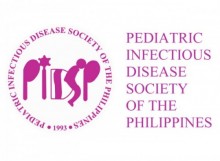Journal 2021 Vol.22 No.1
Outcomes of HIV-Exposed Infants enrolled in the Prevention of Mother to Child Transmission of HIV (PMTCT) Program in Philippine General Hospital: An 8-year Retrospective Study
Anna Soleil Cheshia V. Tan, M.D. DPPS
Abstract
Background: Our country has the fastest growing number of HIV cases in the Asia-Pacific region with a 203% increase from 2010 to 2018. MTCT represents 6% of infections in children and interventions such as the PMTCT program are essential to help reduce new infant infections.
Objective: To determine the outcomes of HIV-exposed infants born in PGH from 2010 to 2018 enrolled in the PMTCT program. To analyze the association of maternal and neonatal clinicodemographic factors to MTCT of HIV.
Methods: A retrospective cohort study using data collected from medical records of HIV exposed infants enrolled in the program.
Results: Out of 117 mother-infant pairs, only 70 met the eligibility criteria. Maternal factors showed that majority have: timely antenatal visit (56/70), maternal HIV diagnosis (70/70) and ART initiation (67/70) prior to delivery, triple lifelong maternal ART (69/70), CD4 >200 prior to delivery (52/70) and cesarean delivery (67/70). Amongst the infant factors-early infant prophylaxis (60/62), >4weeks prophylaxis duration (62/70) and replacement feeding (62/70) were noted in the majority. 2/70 infants were HIV positive. Mortality rate was 1.4% and 50% for HIV infected infants. Overall LTFU rate was 33.3%. Logistic regression showed that maternal co-infection with Hepatitis B(p=0.0275) was a possible determinant of MTCT. Infant HIV prophylaxis duration of >4 weeks had higher survival proportion(p=.0001).
Conclusion: The HIV MTCT rate was 2.86% upon implementation of our PMTCT program, meeting the <5% goal of WHO, suggesting that the program was an effective health intervention strategy. The high LTFU rate though should be considered in the evaluation of the program effectiveness.
Keywords: PMTCT, HIV-Exposed Infant, ARV prophylaxis, HIV Philippines
https://doi.org/10.56964/pidspj2021220107
| View Full Article in PDF format |
Journal 2021 Vol.22 No.1 Original Articles 3pidsp@uplink.com.ph2022-12-08T07:01:07+00:00
